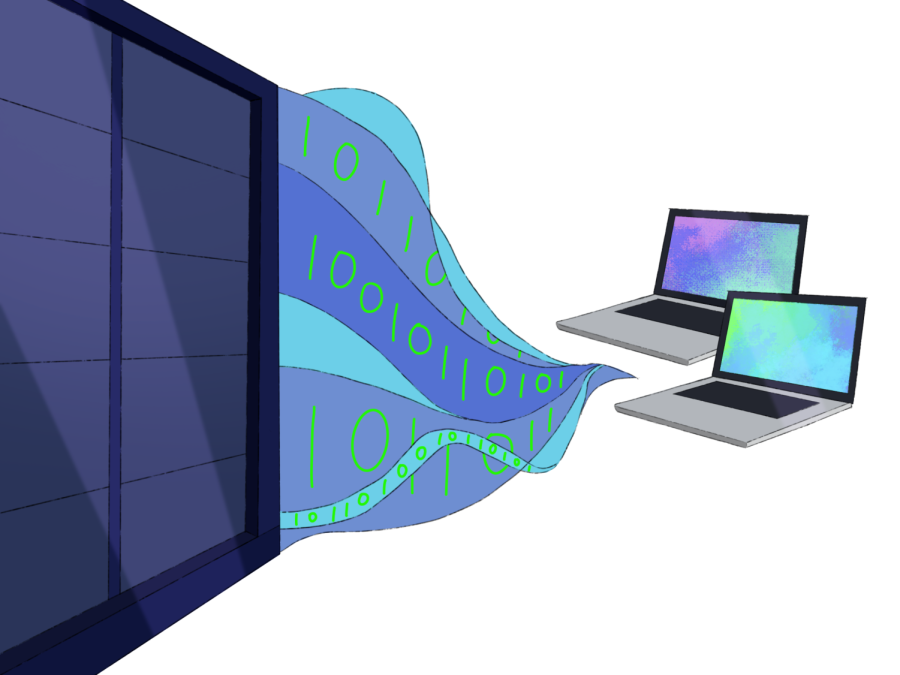As the teacher signals for everyone to take out their devices, sophomore Miles Hua grabs his laptop and sets it down on his desk. Around him, the devices of his peers begin to light up, and shortly after, everybody begins to log into their RapidID portal.
From phones to microwaves to search engines, it is nearly impossible to imagine a life without the streamlined user experience tech provides. At Paly, Hua said he sees students using tech for a variety of purposes on a daily basis.
“Most teachers often have activities through Schoology or other websites during class, be it Quizlet or simply using Google Docs,” Hua said. “Pretty much all of school learning is driven by tech at Paly.”
But while people often take for granted that their devices just work, how companies manage the constantly increasing size of files and data has largely remained unnoticed.
With some of its servers being managed by tech companies while others are hosted locally at the district office, Derek Moore, PAUSD’s Chief Technology Officer, said PAUSD is roughly a medium-sized operation in terms of its technology use.
“Google Drive is one place where a chunk of data lives,” Moore said. “Another big chunk of data is our student information system, Infinite Campus, which has their own data centers based out of Minnesota.”
Unlike PAUSD, which sources its servers from multiple hosts, Meta, the parent company of Instagram, WhatsApp and Facebook, self-hosts all of its servers. While the district has around 12-15 thousand people interacting with its platforms on a daily basis, Meta boasts over 2 billion active users.
Meta has 21 data centers globally, according to Mike Cornelia, site manager of Meta’s data center in Georgia where about 200 people work.
“Our typical model right now is a data center with five large buildings,” Cornelia said. “Each building is just shy of about 500,000 square feet.”
As tech improves at a rapid pace, companies find themselves improving their own hardware systems. At PAUSD, Moore said this resulted in a significant decrease in the number of servers PAUSD manages, from about 300 to about 70.
Moore said he attributes part of this reduction to software providers like Google and Microsoft improving and adding more features over time, allowing them to decommission certain services and switch to relying on those built in to the main platforms.
Meta, on the other hand, finds itself upgrading hardware as technology improves, according to Cornelia.
“We do refresh our hardware whenever we feel like there is enough of a performance increase,” Cornelia said. “We’ll go ahead every few years and refresh that hardware to get more compute power.”
In addition to storing and managing data, both PAUSD and Meta say they put security as a priority, adding in protective measures like multi-factor authentication to their centers.
“There’s a fire extinguisher in the data center, and should this building go up in flames, we do have a backup copy of our data,” Moore said. “There’s an alarm in our data center. For people that can get into the room, they require the key card to get in. So the access to the room is tracked.”
Whether it is writing with Google Docs or scrolling through Instagram, data centers are the driving force behind our daily lives, and Hua said that is amazing.
Hua said, “If you just pause for a moment and reflect on how every component works together, it will really blow your mind.”


